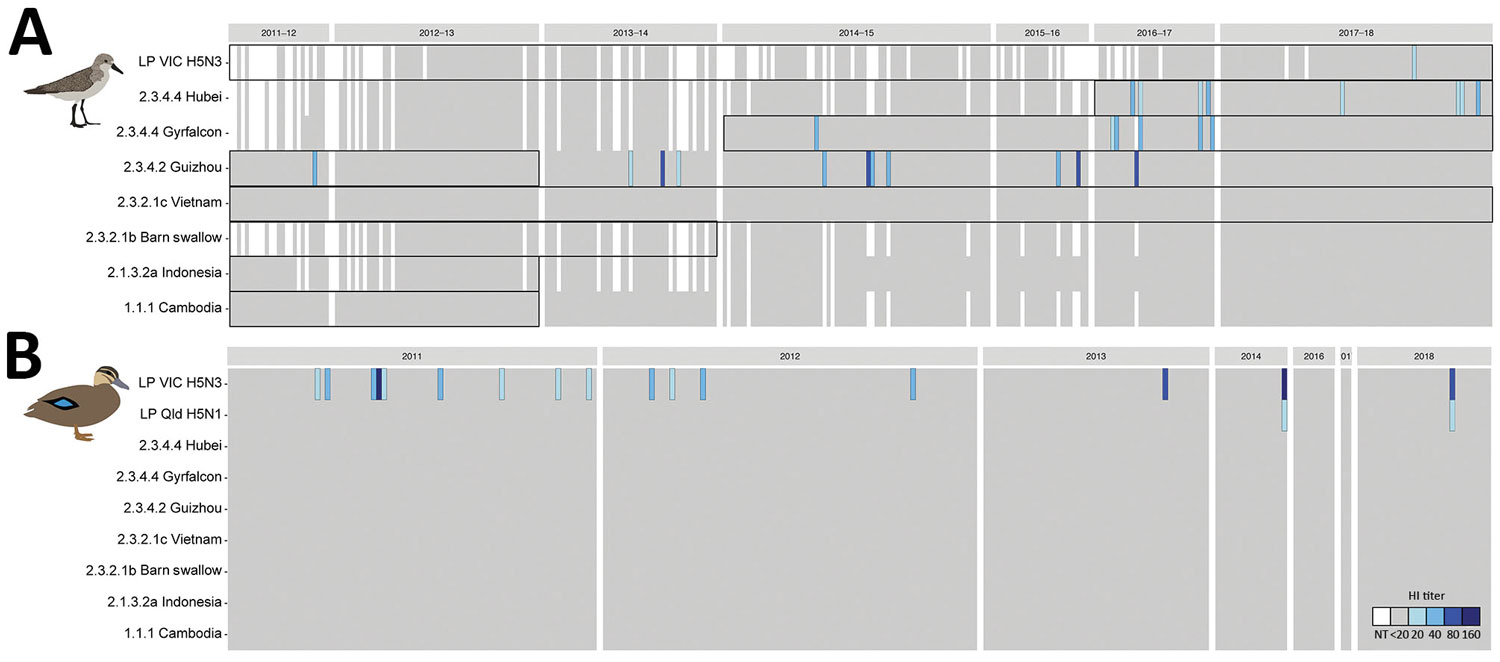Volume 25, Number 10—October 2019
Research
Serologic Evidence of Exposure to Highly Pathogenic Avian Influenza H5 Viruses in Migratory Shorebirds, Australia
Figure 2

Figure 2. Avian influenza H5 virus hemagglutinin inhibition (HI) antibody patterns, Australia, 2011–2018. A) For red-necked stint, year represents the austral summer period, October–April, when this species has a migratory nonbreeding stopover in Australia. Boxes represent periods of circulation for each strain’s lineage, as determined by genomic sequences (Appendix Table 4). B) For Pacific black duck, year represents calendar year. White indicates untested serum samples; gray indicates a titer <20, the starting titer for this assay; blue indicates hemagglutinin inhibition (HI) antibodies, and shades vary depending on HI titer (20–160). Sample numbers are ordered by collection year and sequentially from left to right in the order in which individual birds were caught. Antigens used in this study are on the y-axis, and abbreviated with relevant clade information; full strain names are available in the Table. NT, no titer. Greater detail on positive samples appears in Appendix Figure 1.